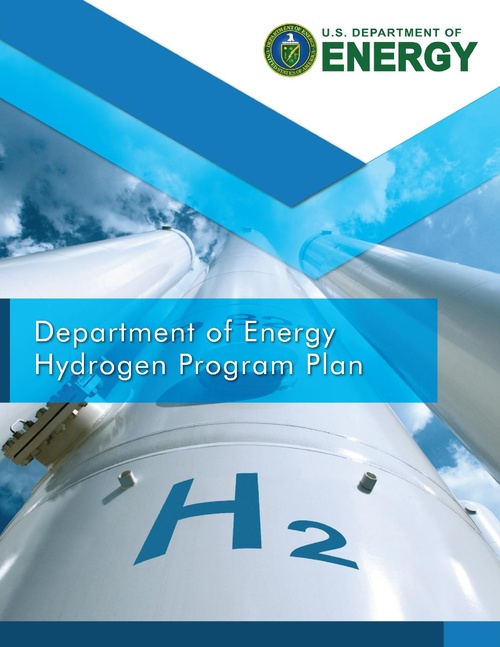DOE Hydrogen Program Plan
| News | |
| Image | 
|
|---|---|
| Published | 2020-11-01 |
| Point(s) of Contact | |
| Organization(s) | US Department of Energy |
| Where | Washington DC |
| Display | Yes |

| |
This plan provides a coordinated high-level summary of hydrogen related activities across DOE.
The U.S. Department of Energy (DOE) Hydrogen Program Plan (the Plan) communicates DOE’s overarching, cross- office strategic plan to accelerate research, development, and deployment (RD&D) of hydrogen and related technologies in the United States. The Plan provides an overview of core technology areas, challenges, and research and development (R&D) thrusts that DOE is pursuing to address these challenges through an integrated DOE Hydrogen Program (the Program). The Program includes activities across multiple DOE offices—including Energy Efficiency and Renewable Energy (EERE), Fossil Energy (FE), Nuclear Energy (NE), Electricity (OE), and Science (SC), and coordinates with the Advanced Research Program Agency – Energy (ARPA-E). While each office has its own planning documents, including program plans and multiyear RD&D plans, this overarching document provides a high-level framework summarizing activities relevant to all offices. This Plan updates the previous version, which built upon preceding strategic and planning documents including the DOE Hydrogen Posture Plan 10 and the National Hydrogen Energy Roadmap. Based on extensive stakeholder input and progress over the last two decades, the Plan serves as a guiding summary of focus areas and the path forward across all relevant DOE offices. In addition to this overarching DOE-wide plan, each office within DOE has its own detailed technical plans and strategies relevant to their mission areas.
This Plan builds upon aspects in the individual DOE office plans and documents, including FE’s Hydrogen Strategy: Enabling a Low-Carbon Economy, EERE’s Hydrogen and Fuel Cell Technologies Multi-Year RD&D Plan, 14 NE’s hydrogen related plans, and SC’s Basic Research Needs for the Hydrogen Economy. Many of these documents are also in the process of updates and revisions and will be posted online and incorporated into future versions of this Plan.
Hydrogen is part of a comprehensive energy portfolio that can enable energy security and resiliency and provide economic value and environmental benefits for diverse applications across multiple sectors. Hydrogen can be derived from a variety of domestically available primary sources, including renewables; fossil fuels with carbon capture, utilization, and storage (CCUS); and nuclear power. Diverse, sustainable, and abundant domestic resources are essential for the nation to:
- provide for a variety of end uses and a range of energy needs,
- reducedependency on single or limited resources,
- retain energy independence and expand opportunities for net exports, and
- be prepared for future scenarios where resources, end-use needs, and constraints may change significantly. Flexibility is a key asset and hydrogen provides that opportunity.
The United States has been at the forefront of hydrogen and related technology R&D, from its inception in the space program, to enabling technology commercialization in transportation, stationary power, and portable-power applications. The origins of DOE’s program in hydrogen technologies date back to the establishment of DOE itself in the mid-1970s when energy security and dependence on foreign oil were a major concern. Over the years, DOE established robust R&D activities on hydrogen and related technology aligned with a number of statutory authorities, including the Spark M. Matsunaga Hydrogen Research, Development, and Demonstration Act of 1990 and the Energy Policy Act of 2005 (EPACT).